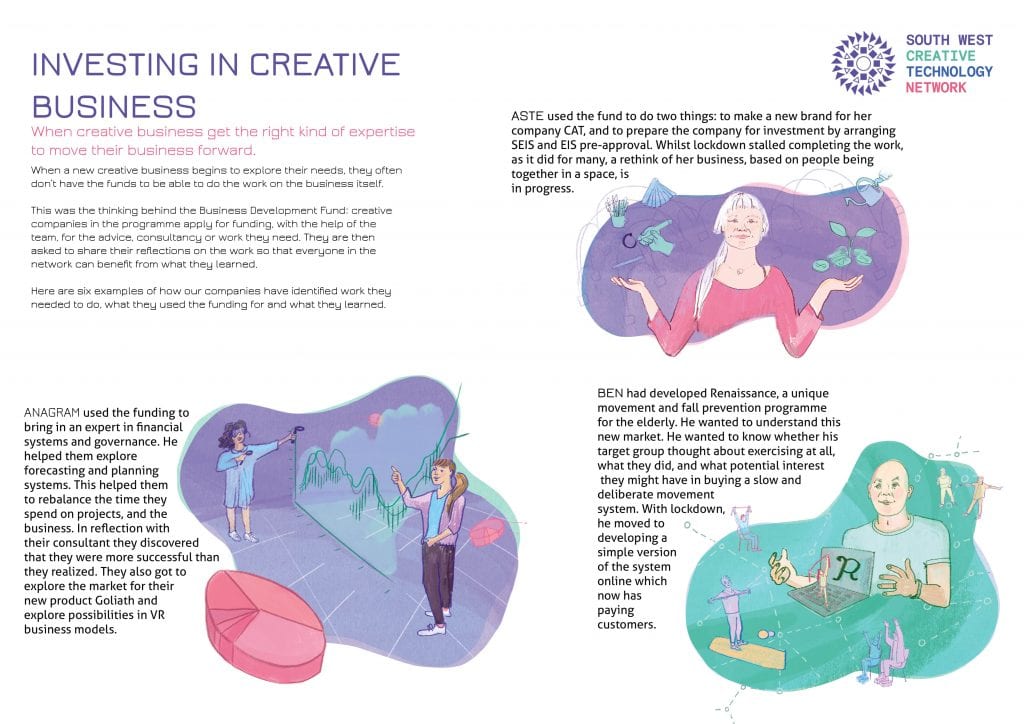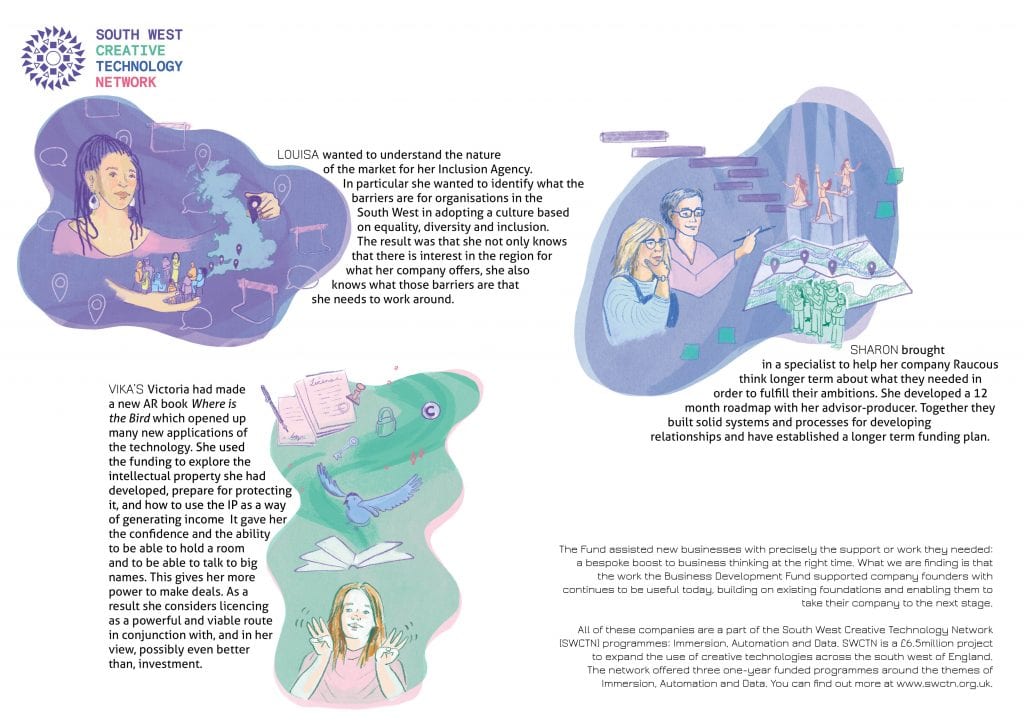When creative business get the right kind of expertise to move their business forward.
When a new creative business begins to explore their needs, they often don’t have the funds to be able to do the work on the business itself.
This was the thinking behind the Business Development Fund: creative companies in the programme apply for funding, with the help of the team, for the advice, consultancy or work they need. They are then asked to share their reflections on the work so that everyone in the network can benefit from what they learned.
Here are six examples of how our companies have identified work they needed to do, what they used the funding for and what they learned.


Download the PDF here:
Full copy here:
Anagram used the funding to bring in an expert in financial systems and governance. He helped them explore forecasting and planning systems. This helped them to rebalance the time they spend on projects, and the business. In reflection with their consultant they discovered that they were more successful than they realized. They also got to explore the market for their new product Goliath and explore possibilities in VR business models.
Aste used the fund to do two things: to make a new brand for her company CAT, and to prepare the company for investment by arranging SEIS and EIS pre-approval. Whilst lockdown stalled completing the work, as it did for many, a rethink of her business, based on people being together in a space, is in progress.
Ben had developed Renaissance, a unique movement and fall prevention programme for the elderly. He wanted to understand this new market. He wanted to know whether his target group thought about exercising at all, what they did, and what potential interest they might have in buying a slow and deliberate movement system. With lockdown, he moved to developing a simple version of the system online which now has paying customers.
Louisa wanted to understand the nature of the market for her Inclusion Agency. In particular she wanted to identify what the barriers are for organisations in the South West in adopting a culture based on equality, diversity and inclusion. The result was that she not only knows that there is interest in the region for what her company offers, she also knows what those barriers are that she needs to work around.
Sharon brought in a specialist to help her company Raucous think longer term about what they needed in order to fulfil their ambitions. She developed a 12 month roadmap with her advisor-producer. Together they built solid systems and processes for developing relationships and have established a longer term funding plan.
Vika’s Victoria had made a new AR book Where is the Bird which opened up many new applications of the technology. She used the funding to explore the intellectual property she had developed, prepare for protecting it, and how to use the IP as a way of generating income It gave her the confidence and the ability to be able to hold a room and to be able to talk to big names. This gives her more power to make deals. As a result she considers licencing as a powerful and viable route in conjunction with, and in her view, possibly even better than, investment.
The Fund assisted new businesses with precisely the support or work they needed: a bespoke boost to business thinking at the right time. What we are finding is that the work the Business Development Fund supported company founders with continues to be useful today, building on existing foundations and enabling them to take their company to the next stage.
All of these companies are a part of the South West Creative Technology Network (SWCTN) programmes: Immersion, Automation and Data. SWCTN is a £6.5million project to expand the use of creative technologies across the south west of England. The network offered three one-year funded programmes around the themes of Immersion, Automation and Data. You can find out more at www.swctn.org.uk.
